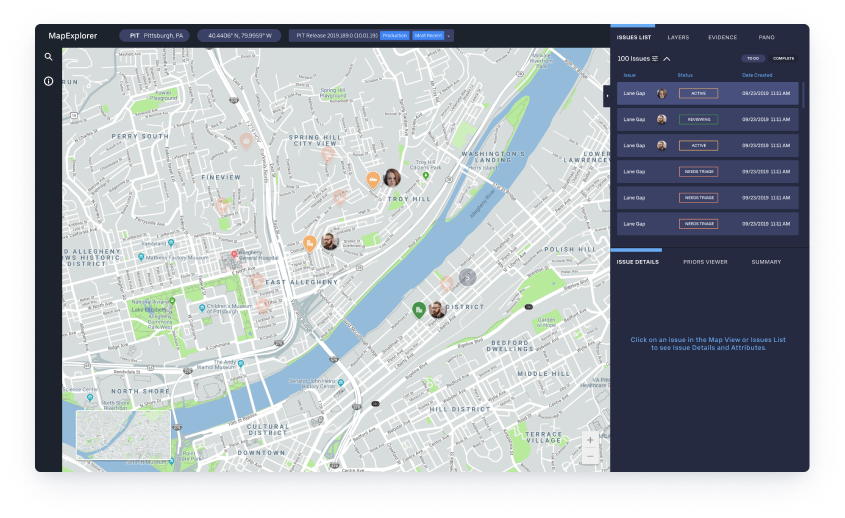CASE STUDY
Uber ATG
MapExplorer
for Triage
Helping triage operators focus on their work in order to
make the roads safe for self-driving vehicles.

Project Background
Uber ATG triage specialists are the last line between a self-driving vehicle and an accident. These triage specialists support the creation of high quality maps that are then used to train self-driving vehicles and provide a safe and legal driving experience. Events, missing or new features detected during a mission, are reviewed by triage specialists to verify whether an event is an issue or if something looks amiss enough to escalate to the correct development group (autonomy, simulation, or machine learning).
The Problem
The triage team is a small team - four people (three triage specialists and a manager). The business wants to scale the triage team and add more specialists, but it is limited by the way in which the team works. That is, the triage team follows an eighteen-step manual process to do their work. These triage specialists spend the majority of their time copying and pasting URLs and commands into many different applications, when they just want to verify whether an event is an issue.
Uber ATG tasked me with talking to the triage team and examine how they work, specifically looking at their specialist workflow for areas of improvement (including identifying inefficiencies), in order to design an application that prioritizes the needs of the triage specialist and provides the means to scale up the size of the team.
The Solution
I reduced an ~eighteen-step manual process to a ~two-step process (an 89% reduction). I redesigned a familiar software experience, MapExplorer, so that the system will automatically pull events for triage specialists to work on and automate any manual steps to eliminate any extraneous copy-and-paste tasks.
Through this work, I introduced many usability enhancements to align with how triage specialists work, their software familiarity, and to help engender a sense of trust for the automated tasks being performed for them.
The Impact
Uber ATG considered this engagement a smashing success given the time to do research and iterate on designs based on testing feedback.
We achieved a 75% increase in usability between concept two and the third and final concept.
The triage specialists gushed that they wanted to use our product - a major win over the process currently in place.
“This was a great project, and let me tell you why... You listened to us... You understood me and the entire QA team, and I appreciate it. Thank you.”
- Product Manager, Uber ATG
Roles & Responsibilities
- Contextual inquiry
- User interviews
- Usability testing
- Needs analysis
- Requirements analysis
- Personas and empathy maps
- Information architecture
- Interaction design
- Low-fidelity wireframes
- High-fidelity design concepts
- Prototyping
- Structured ideation
- Large-screen design
Tools
- Figma
- Google Docs